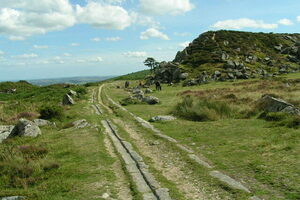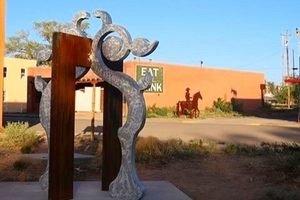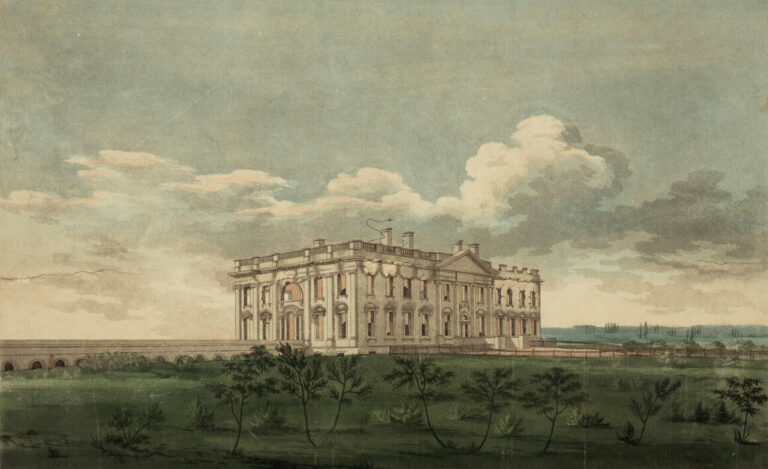Templer Way in Devon, England

This 18-mile footpath follows the routes of the Haytor Tramway (or Railway) and the Stover Canal. It is named for the family that constructed the unique tramway and the historic waterway. Together, these routes were used to transport granite from quarries at Haytor to the docks at Teignmouth. For lovers of old railways and old canals this route is a must.
The tramway is long disused but is almost unique in that the rails were constructed from granite rather than metal. They were also L-shaped, in cross section in the form of a primitive flangeway, which allowed the use of wagons without flanged wheels, allowing them to be used as normal carts at either end of their journey. The full wagons descended by gravity to the junction with the Stover Canal and the empties were pulled back up to the summit by horses. This system even had a series of points called switchstones, which were controlled by wedge shaped switching devices. They may have been made of wood and have rotted away but another theory is that they were of iron and have all been stolen. The tramway connected to the canal in 1850 at a side arm terminating at Ventiford Basin.
The relatively short canal pre dates the tramway, having been originally built to transport clay to the coast, to be used in the ceramics industry in various parts of Britain but with the major contact being for supplying Josiah Wedgewood. It was built in 1792 and was in use until the early 1940s. A unique feature of this canal is one of the locks halfway along its length, called the Graving Lock. Uniquely, this lock has a dock on one side and it was capable of being used as a dry dock for boat repairs when it was empty. There were a total of five locks on this 1.7-mile canal.
The walking path gets its name from the Templer family who constructed the Stover Canal and Tramway. At about the midpoint of the path you can see the former grounds of Stover House, the home of the Templer family.
Currently most of the canal is not in water. An embankment breach in 1951 drained much of the water. Currently the Stover Canal Trust are attempting to restore the entire canal. The lower end of the canal near the River Teign is currently part of the Jetty Marsh nature reserve.





